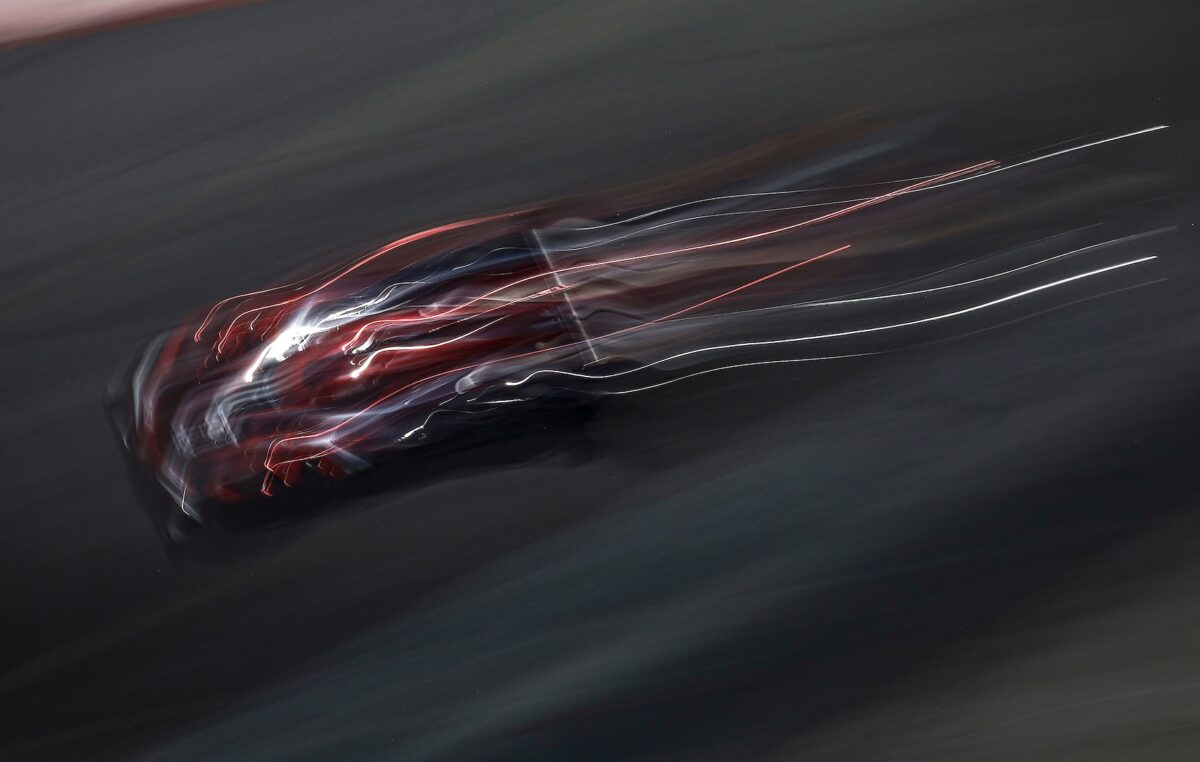The idea of a new racetrack is both exciting and daunting. Especially when the schedule is tight — three-and-a-half hours of testing before qualifying in the case of the IMSA WeatherTech SportsCar Championship’s first visit to the 1.654-mile, nine-turn downtown street circuit — there’s not a lot of time to get acclimated, to set up the car, and find the right references for a consistent, fast lap.
Plus, the circuit will change markedly. The IMSA GTP and GTD PRO cars are the first on the circuit for the weekend at 8am on Friday. Come qualifying, not only have the IMSA teams put a lot of Michelin rubber on the circuit, but the NTT IndyCar Series and Indy NXT series will have had sessions as well and the grip will be dramatically different.
“It’s a unique weekend coming up in Detroit,” notes Alex Riberas, driver of the No. 23 Heart of Racing Aston Martin Vantage GT3 Evo in GTD PRO with Ross Gunn. “The Motor City is going to provide a unique circumstance, which is that nobody has really driven on that circuit before so it’s hard to know what to expect in terms of what the track is going to be like, what the car is going to feel like and that is super exciting. That uncertainty is going to provide a lot of opportunities.”
To maximize their limited time, drivers are looking for any source of information that might prove useful. Video from last year’s IndyCar and Michelin Pilot Challenge races, especially onboards, will have been consumed voraciously. Drivers and engineers that can gather information from teams and drivers that have raced the circuit will certainly do so. Some have even checked out the streets in a rental car. And much of the information has already been fed into simulators for drivers to get some pre-weekend feel.
In the case of Corvette Racing by Pratt Miller Motorsports, relevant data from the Chevrolet IndyCar Series teams was applied to the driver-in-the-loop simulator. Those teams that have had access to such data will certainly roll off the truck better prepared than others.
Joey Hand may be the best prepared of the drivers, as he raced the circuit in a McCumbee McAleer Racing Ford Mustang GT4 last year. While a different beast from his No. 65 Ford Multimatic Motorsports Mustang GT3, a firsthand look at the circuit never hurts.
“I think I have a little bit of advantage compared to probably most everybody. At least I know what I’m getting into,” Hand says. “I know for sure that it’s the tightest track we’re going to run — it’s no Long Beach. Long Beach is probably the widest, fastest street course that I’ve driven. And Detroit is the tightest street course I’ve ever driven. I mean, in the neighborhood of Trois-Rivieres. And then it has this massive, massive straightaway.

“For sure, one of the things we’re going to think about there is bump compliance. Compliancy was a thing that we had to work through with the GT4 car, because the back section around the buildings by the river, there’s these massive, kind of like, whoops-style bumps.”
Different cars, sure, but first-hand knowledge certainly translates. But what about a team that has both an IndyCar Series and WeatherTech Championship GTP component, such as the Chip Ganassi arm of Cadillac Racing, Wayne Taylor Racing with Andretti, BMW M Team RLL, or Porsche Penske Motorsport? An IndyCar and a GTP car are both purpose-built carbon monocoque race cars with lots of power, but that’s kind of where the similarities end.
“There’s some general overview that goes across the engineering as far as general questions, or maybe things we struggle with,” explains PPM’s competition director Travis Law. “But for the most part, it’s very specific to your car and and the rules that apply. So we basically have to learn for ourselves and take the best approach that we think we can.”
All the preparation that a team or driver can do before hand certainly helps. But, really, it’s feet and tires on the ground that’s really going to feed the information banks.
“I’m a big street course fan, so it’s always exciting to see a new one,” says Dane Cameron, driver of the No. 7 PPM 963 with Felipe Nasr, the GTP points leaders coming into Detroit. “Belle Isle was one of my favorites. I had a lot of success there. Obviously, that was a difficult race to pull off, and it was a big deal to move into the city center. So I watched the IndyCar race last year, watched a little bit of onboard, we’ll do some sim work. And then, obviously, the track walk when you arrive there is hugely important. That’s kind of first time you really put your eyes on it and really see the details and start to see the surface and bumps and curves. That really starts to connect the picture of, ‘OK, what can I use? What can I not use? What do I need to look out for?’
“In general a street course evolves so much, you can kind of just go and learn with it, so to speak.You arrive, you have to be conservative because there’s no grip — that kind of ties in with you finding your way exploring — and as you start to understand you get more comfortable with the layout in those first 5, 10 laps. The track is evolving quite a lot as well and just progresses over the weekend.”
It’s less than 33 hours from the time the green flies for the first practice session at 8am on Friday until the checker falls on the 1h40m race at 4:50pm on Saturday. That’s not much time to process a lot of information, and the teams that do it well — luck permitting — will be on the podium at the end.
